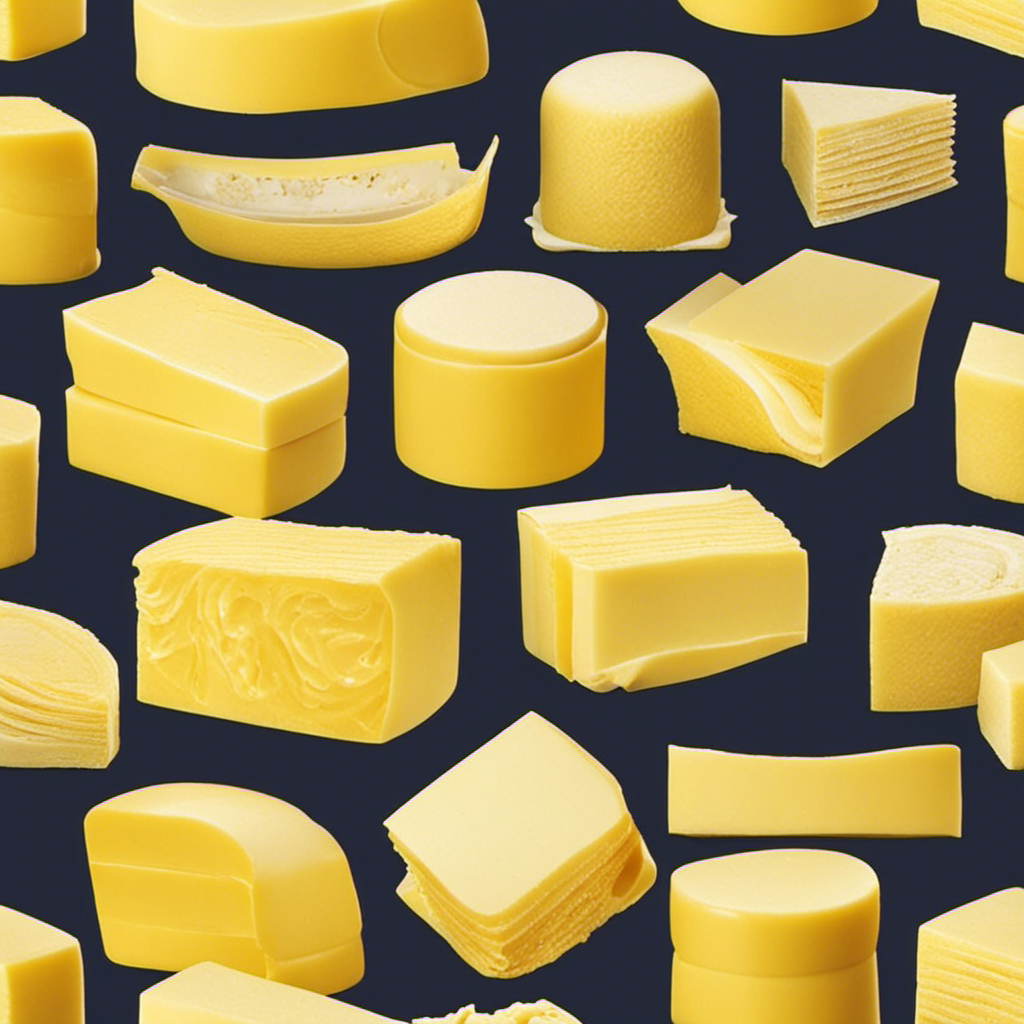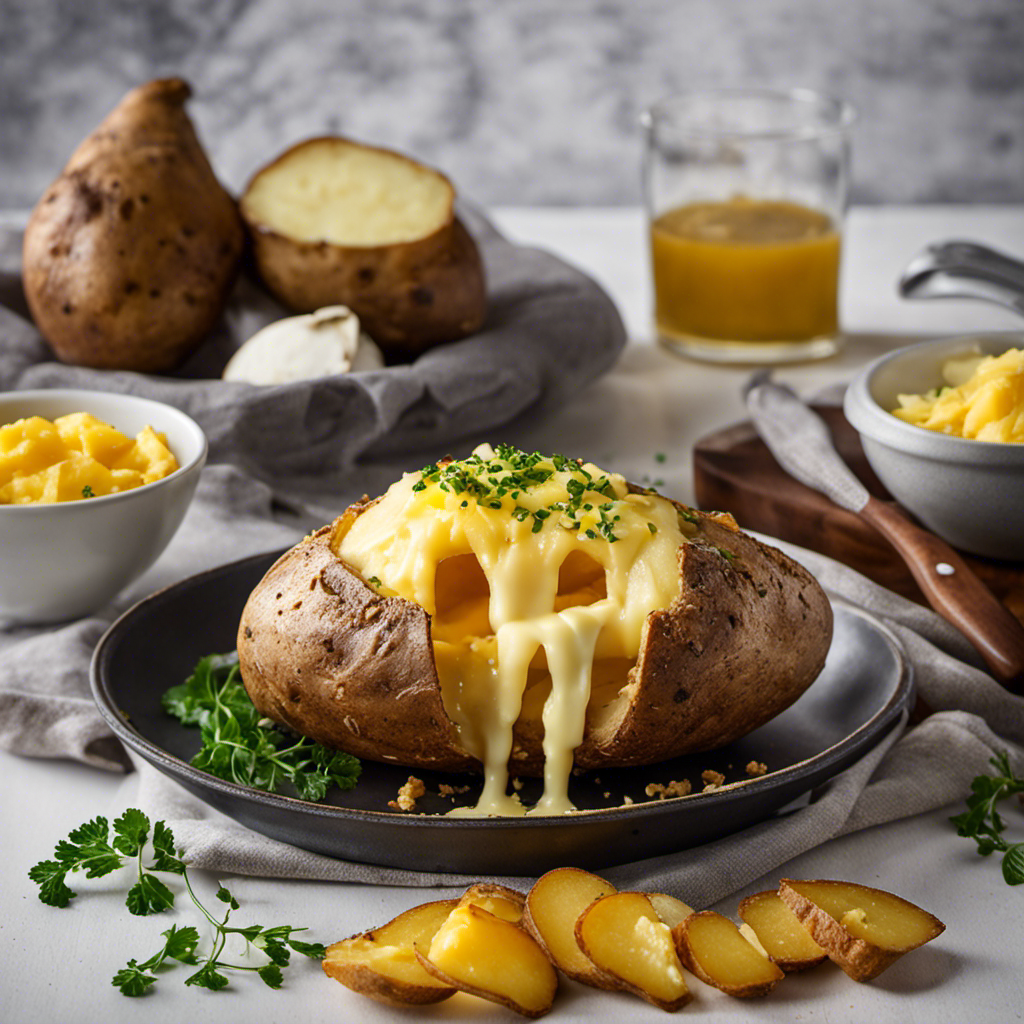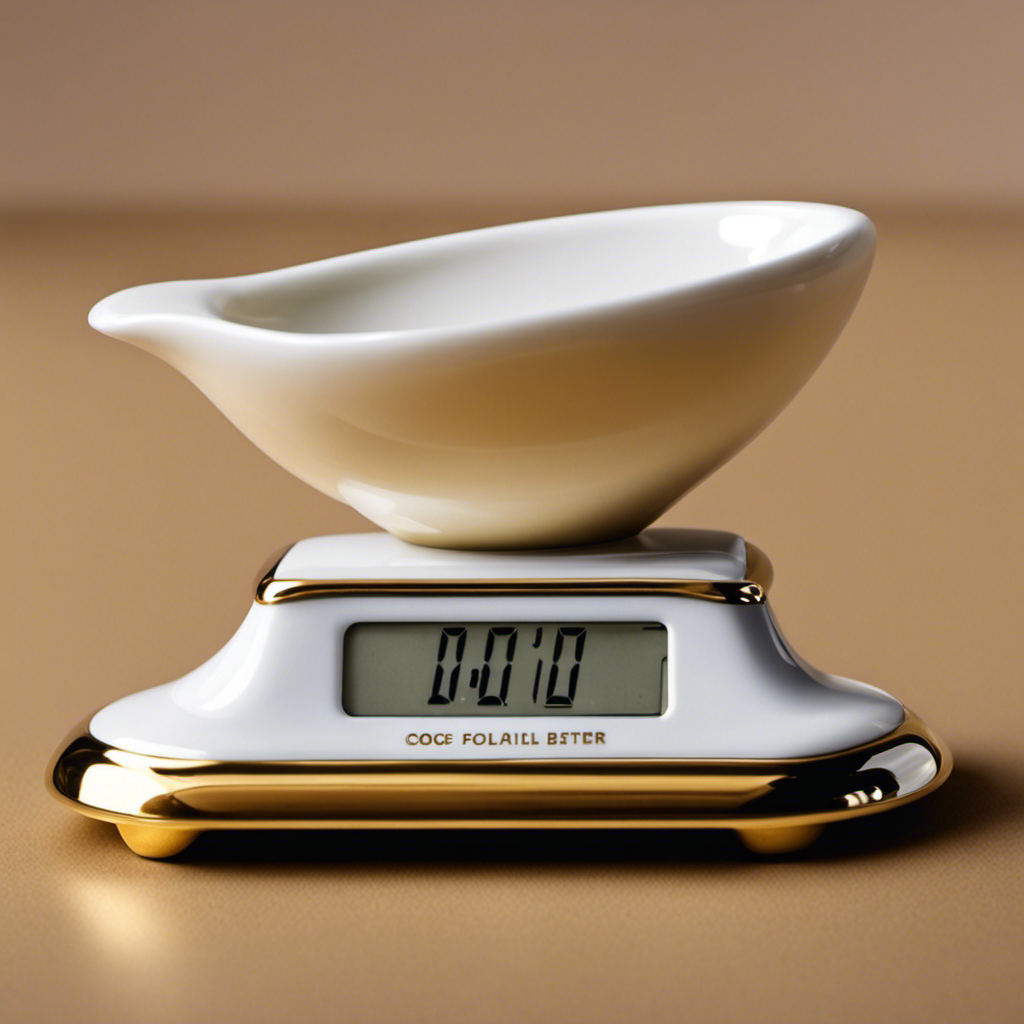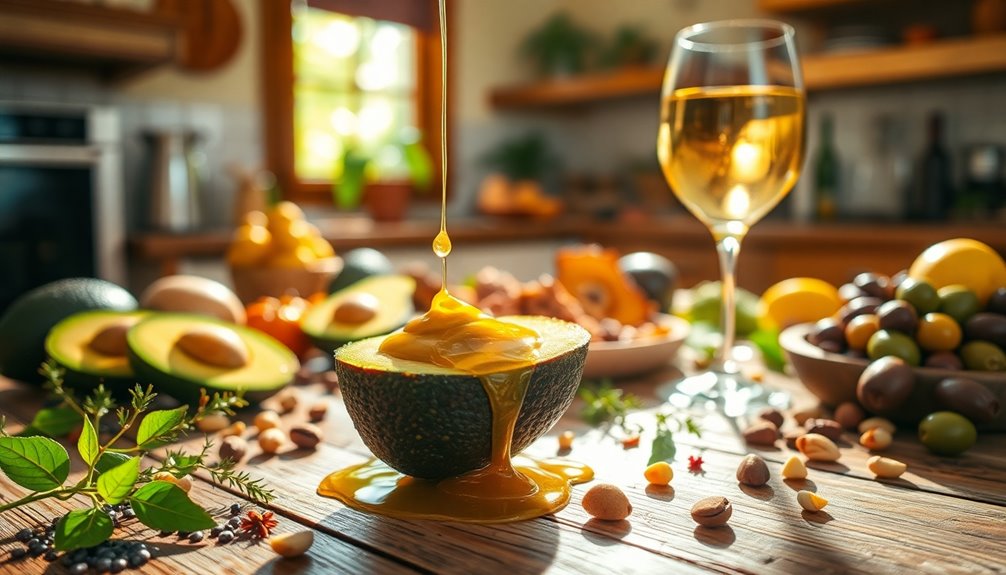I can hardly believe it, but it’s true. Half a stick of butter contains a surprising number of calories. If you enjoy cooking with this rich ingredient like I do, it’s crucial to be aware of the energy you are consuming.
In this article, we’ll delve into the nutritional value of half a stick of butter and explore the calorie count. Get ready to do some calculations and discover the truth behind this indulgent culinary staple.
Key Takeaways
- Half a stick of butter contains approximately 400 calories.
- Butter is higher in calories compared to oils like olive oil or vegetable oil.
- Butter is low in essential nutrients, vitamins, and minerals.
- Consuming high-calorie foods like butter can lead to weight gain.
The Caloric Content of Half a Stick of Butter
I wonder how many calories are in half a stick of butter.
Understanding the health implications of consuming half a stick of butter can help us make informed choices about our diet.
Butter is a high-fat dairy product commonly used in cooking and baking. It contains approximately 100 calories per tablespoon, which means that half a stick of butter, equivalent to 4 tablespoons, would contain around 400 calories.
Comparing the calorie content of half a stick of butter to other fats, it’s important to note that butter is higher in calories compared to oils like olive oil or vegetable oil.
For instance, olive oil contains about 120 calories per tablespoon, making it a healthier alternative to butter when it comes to calorie intake.
Understanding the Nutritional Value of Half a Stick of Butter
It’s important to understand the nutritional value of a half stick of butter.
Butter is a common ingredient used in cooking and baking, but consuming it in excess can have negative health implications.
A half stick of butter typically contains around 400 calories and 45 grams of fat. The majority of this fat is saturated fat, which has been linked to increased risk of heart disease.
Saturated fat can raise cholesterol levels and contribute to the development of plaque in the arteries.
Additionally, butter is low in essential nutrients and doesn’t provide significant amounts of vitamins or minerals.
Understanding the nutritional value of butter can help individuals make informed decisions about their butter consumption and consider healthier alternatives for their cooking and baking needs.
Determining the Calorie Count of Half a Stick of Butter
Determining the calorie count of half a stick of butter can be helpful in understanding its impact on overall calorie intake. To determine the nutritional facts of half a stick of butter, we need to look at the serving size and the calories per serving. According to the USDA, a stick of butter typically contains 8 tablespoons, and each tablespoon has approximately 102 calories. Therefore, half a stick of butter would contain 4 tablespoons, which would equate to around 408 calories.
Understanding the calorie count of half a stick of butter is important for individuals who are watching their calorie intake or trying to maintain a healthy weight. Consuming too many calories from butter or any other high-fat food can lead to weight gain and increase the risk of certain health conditions such as heart disease and obesity.
By determining the calorie count of half a stick of butter, individuals can make informed decisions about their food choices, portion sizes, and overall calorie intake. It is essential to consider the health implications of high-calorie foods and incorporate them into a balanced and nutritious diet.
| Serving Size | Calories |
|---|---|
| 1 tablespoon | 102 calories |
| 4 tablespoons (half a stick) | 408 calories |
Exploring the Energy Content of Half a Stick of Butter
Exploring the energy content of half a stick of butter can provide valuable insights into its impact on overall energy intake. Butter is known for being high in calories, with each tablespoon containing approximately 100 calories. Therefore, half a stick of butter, which is equivalent to 4 tablespoons, would have around 400 calories. This significant calorie content can contribute to weight gain and an increased risk of chronic diseases such as obesity and cardiovascular disease.
Considering the health benefits of butter alternatives is important for those looking to reduce their calorie intake. Options like olive oil, avocado, or nut butters can provide similar flavors and textures while offering healthier fats and fewer calories.
Examining the impact of butter consumption on cholesterol levels is also crucial. Butter contains high amounts of saturated fat, which can raise LDL cholesterol levels and increase the risk of heart disease. Choosing low-fat alternatives or using butter sparingly can help maintain healthy cholesterol levels.
Overall, being mindful of the energy content of half a stick of butter and exploring healthier alternatives can support a balanced diet and better overall health.
Calculating the Calories in Half a Stick of Butter
I can calculate the number of calories in half a stick of butter by multiplying the calorie content of one tablespoon by four. One tablespoon of butter contains approximately 102 calories, so half a stick of butter would have around 408 calories.
When calculating calories, it’s important to consider alternatives to butter for those who are looking to reduce their calorie intake. Butter alternatives such as margarine or spreads made from vegetable oils can be lower in calories. For example, one tablespoon of margarine typically contains around 72 calories, while spreads made from vegetable oils can have even fewer calories.
Frequently Asked Questions
Is Half a Stick of Butter a Common Measurement in Recipes?
Using half a stick of butter is a common practice in baking. It’s a convenient measurement because it’s easy to divide a stick of butter in half.
However, there are alternative measurements for butter in recipes such as tablespoons or grams. It’s important to follow the recipe instructions for the best results.
How Does the Caloric Content of Half a Stick of Butter Compare to Other Cooking Fats?
The caloric content of half a stick of butter is significant compared to other cooking fats. Butter contains about 810 calories per 100 grams, making it one of the highest calorie cooking fats.
In comparison, olive oil has around 884 calories per 100 grams, while vegetable oil has about 884 calories.
It’s important to be mindful of the caloric content of cooking fats when creating a balanced diet and managing weight.
Are There Any Health Benefits Associated With Consuming Half a Stick of Butter?
There are potential health risks associated with consuming half a stick of butter due to its high saturated fat content.
While butter does provide some nutritional value, such as vitamins A, D, and E, it should be consumed in moderation.
Excessive consumption of saturated fats has been linked to an increased risk of heart disease.
It’s important to consider the overall balance of fats in our diet and opt for healthier alternatives when possible.
Can I Substitute Half a Stick of Butter With a Healthier Alternative in Recipes?
When it comes to substituting half a stick of butter with a healthier alternative in recipes, I must say it’s quite a challenge. Butter, despite its deliciousness, can have a significant impact on our health.
However, fear not! There are some healthier butter alternatives out there, like avocado or coconut oil. These alternatives can add a unique flavor and texture to your dishes while providing some added nutritional benefits.
What Is the Recommended Daily Intake of Calories for an Average Adult, and How Does Half a Stick of Butter Fit Into That?
The recommended daily calorie intake for an average adult varies depending on factors such as age, gender, and activity level. However, a general guideline is around 2000-2500 calories.
Half a stick of butter contains approximately 400-450 calories, which is a significant amount when considering the daily intake.
It’s important to be mindful of the calorie content in cooking fats and consider healthier alternatives with lower calorie counts, such as olive oil or avocado.
Conclusion
In conclusion, the calorie count of half a stick of butter is approximately 400 calories.
Understanding the nutritional value of this amount can help individuals make informed decisions about their dietary intake.
It’s important to remember that while butter can be a tasty addition to meals, it should be consumed in moderation due to its high calorie content.
By exploring the energy content of butter, individuals can better manage their calorie intake and maintain a balanced diet.










